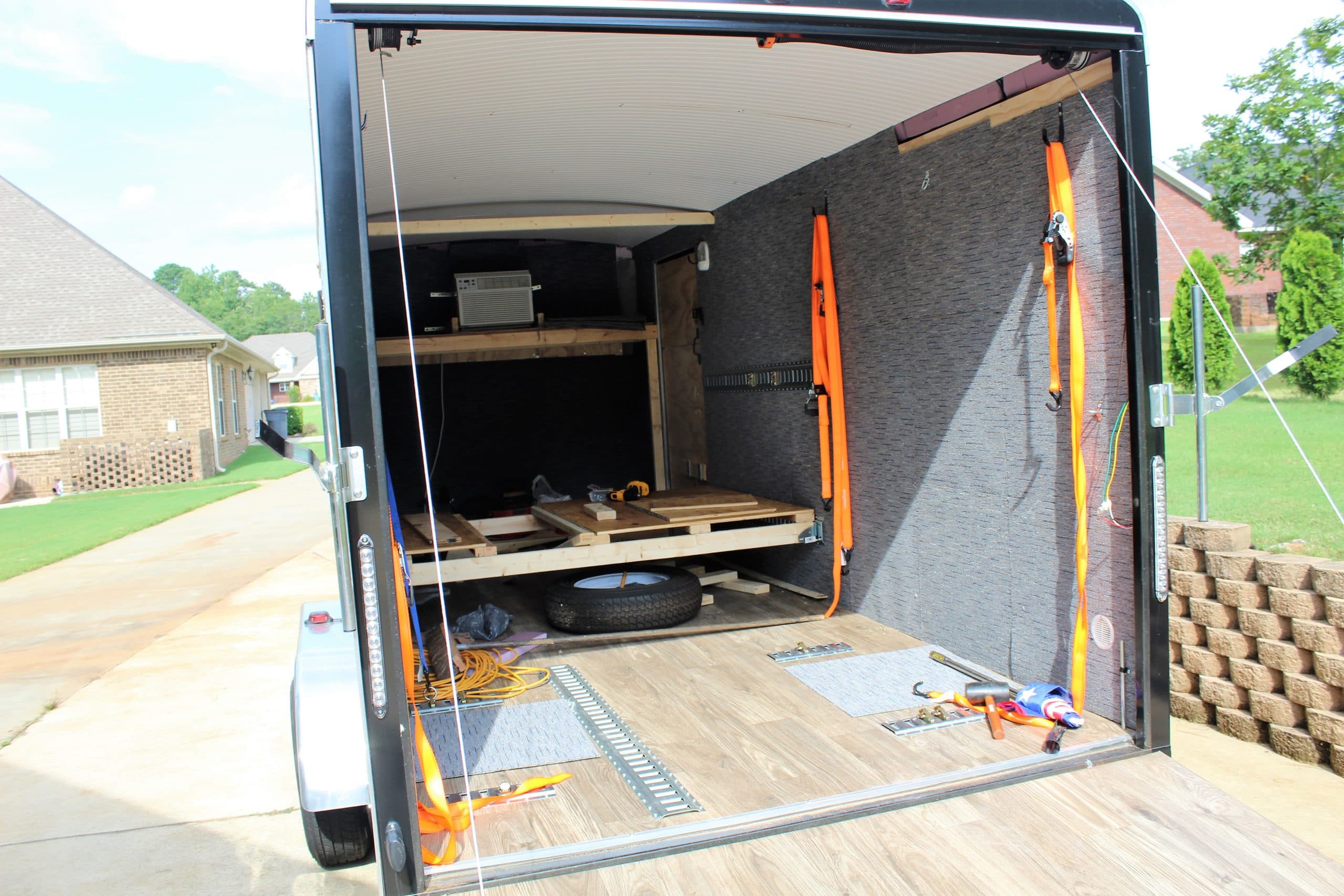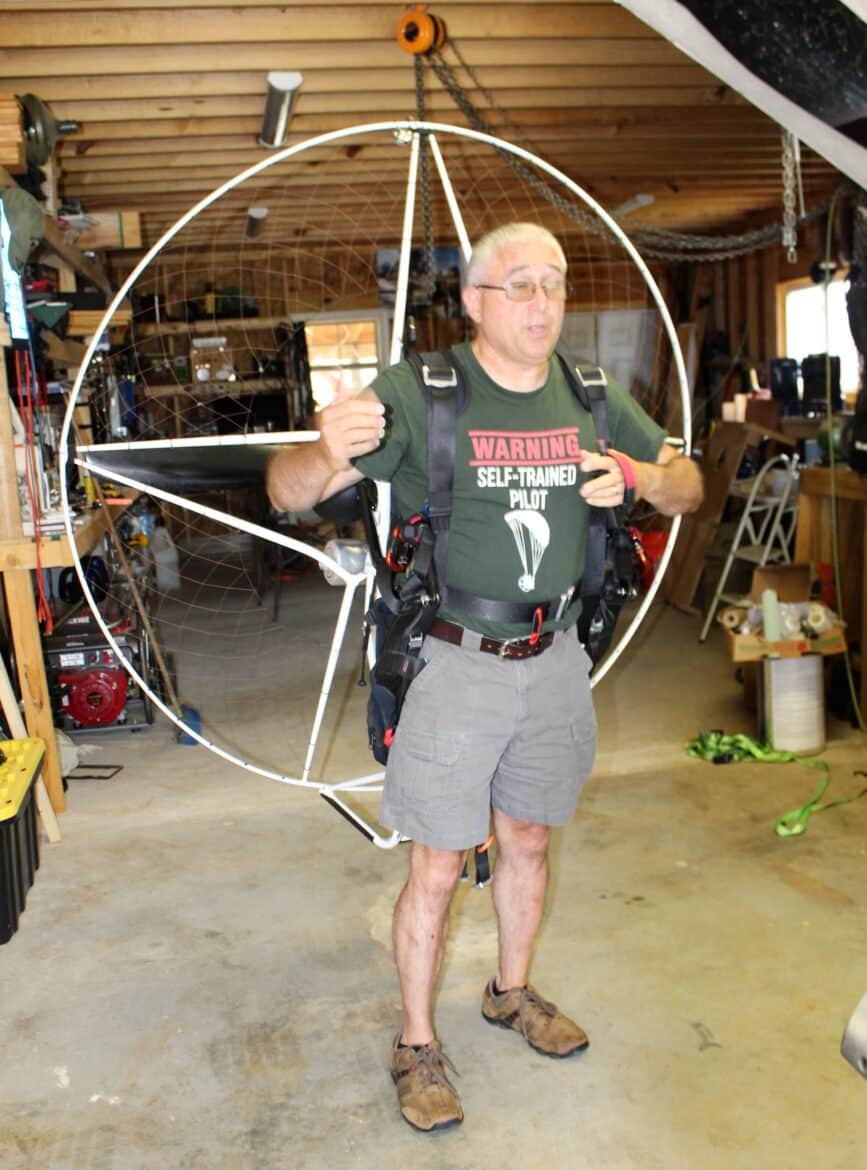
By Gerri Miller
Staff Writer
Elmore/Autauga News
This past week the Elmore/Autauga News has received many calls and e-mails asking about the man with a mysterious flying machine who has been seen soaring above Prattville, Millbrook, and Montgomery.
That man is David DePinho, a 55-year-old retired Air Force chaplain, who lives in Prattville with his wife Martha and two tiny dogs. His flights around our area are by paramotor, which combines the easy flying characteristics of a paraglider wing with the autonomy and range of powered flight.
“It’s unnatural. You really are flying by yourself,” DePinho said. “The only thing in front of you is your wind screen.”
DePinho took up the hobby last September and has so far recorded more than 60 hours of time in the air. Times in the air range from eight minutes to nearly two hours He said that for the first 45 flights, he experienced anxiety and a dry mouth. So far, he has logged in 112 flights.
“Between 40-45 flights in, the fear went away and it’s almost therapeutic now,” DePinho said “It’s really exciting as well as calming.”
He said he believes anxiety keeps paramotorists safe. “You have to have a deep respect for what is going on,” he said.
Believe it or not, DePinho has a fear of heights, but not when paramotoring. “It disconnects you from your fear when your feet lift off the ground,” he said.
DePinho, however, didn’t take to the skies without proper training. He said he found a school in Jasper where he trained full-time for two weeks. He has also taken a six-week course in Lake Wales, Fla. He said the schools teach engine maintenance, weather patterns, aviation maps, how to read the sky, and how to fly the paramotor. He recommends that anyone who wants to start paramotoring take these certified classes. “It’s as safe as driving a car unless you are stupid,” he said.
There are some things that a paramotorist must watch out for. DePinho said you are most likely to be injured or killed if you fly above water. This is because the equipment is heavy and might weigh the flyer down to the point he might drown before he could remove it.
“You always need to be high enough to land,” he said.

What happens if your motor dies midflight? “You always need to think what you will do if your engine goes out,” he said “You don’t need the engine if there is a safe place to land.”
The glider is efficient and will descend even better than a normal parachute. If you have reasonable altitude to find a potential landing site, you can make a regular, safe landing.
Having a safe landing is one of the reasons paramotorists are prohibited from flying over people, congested areas, or houses.
DePinho must be careful how high he flies his paramotor. Flyers are limited to Class G and E airspace, which goes 700-1200 feet above ground level. He said Prattville limits his flights to 700 feet above ground level because of the city’s airport. In Class G airspace, one must have visibility up to one mile and in Class E airspace one must be able to see for three miles.
Another way to get hurt is to start the engine improperly, he said. The paramotorist should be strapped in and crank the machine over his shoulder so he doesn’t get cut by the propeller. Those flyers who get brave and try to do aerial acrobatics can find themselves in trouble as well.
A paramotorist is also limited to a short time window of wind speed – the upper limit is 6-8 mph with gusts of 12 mph. There are also windows of time to fly: One half hour before to one half hour after sunrise and sunset.
For those interested in paramotoring, it’s a rather expensive hobby. DePinho said some items, however, can be purchased used at a discount.
The first thing needed is the wing. There are four different classifications of wings and DePinho owns two different wings. The first wing is lighter and holds up to 180 pounds. His second engine, called a Moster 185, is much more powerful and holds up to 360 pounds. He said your rate of speed in the air is determined solely by the type of wing you purchase. Cost for a wing? Anywhere from $3,200 to $4,000.
The second thing needed is your engine, frame, and harness, normally sold as one item. This will set you back between $5,000 and $9,000.
The third thing needed is a helmet. DePinho said this is not necessarily for crashes. The helmet protects the flyer’s head because there will be a high-speed propeller right behind his head. Cost for a helmet can range from $200 to $900.
DePinho wears four cameras when he flies, including a GoPro 8. He records his flights and posts them to YouTube. He uses an app called FlySkyHi that helps him logs his flights. The app also lets him know if it is safe to fly 700 feet above ground level. He has cameras on his foot, arm, and helmet.
The DePinhos retired in Prattville in 2016 after traveling the world with his Air Force assignments. The couple had lived in the city in 2008 while DePinho was a student at the Air Command and Staff College at Maxwell Air Force Base. In 2010, he was deployed to Afghanistan.

“We have traveled the world and the people we’ve found in Elmore and Autauga counties are the best anywhere,” he said. He and his wife are members of Centerpoint Fellowship Church.
DePinho is in the process of outfitting an empty cargo trailer with a platform for a queen-sized bed. The trailer will be cooled with a wall AC unit. He is, of course, making a place for his paramotor equipment. When completed, the couple plans to travel the western part of the United States.
If you would like to view DePinho’s flight videos, you can visit or subscribe to his YouTube channel here:
https://www.youtube.com/channel/UCYB9GpF_spmqPVUvp08jM0w







